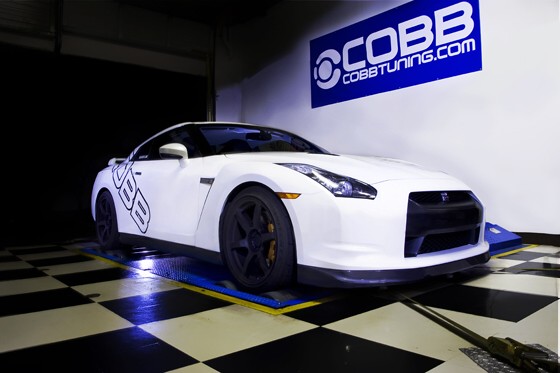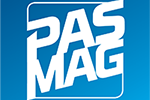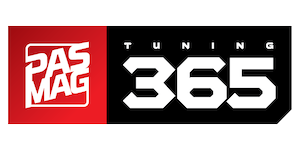COBB Tuning is never satisfied with results that are “good enough” and they live to experiment. In the environmentally conscious Pacific Northwest, home of the COBB Tuning Surgeline Facility, they have a ready supply of  corn juice, or as it is commonly referred to on the streets, E85 fuel. E85 is a blend of 85% ethanol and 15% gasoline. Originally developed as a bio-fuel for “flex fuel” domestic cars in the US, E85 has become the alternative fuel of choice for performance enthusiasts – who knew? The appeal of this biofuel comes from its high octane compared to regular pump fuels – 91 to 94 compared to 105, plus it has a very low price compared to high octane race fuels. In many parts of the US, E85 costs as little as $2.00 per gallon. When compared to $8 to $14 dollars per gallon for quality high octane race fuels, E85 represents a huge bargain. If you don’t know about E85, naturally you’re asking “why am I not running e85 every day?” The answer is you can’t. Most stock vehicles are not calibrated or equipped to utilize ethanol based fuels.
corn juice, or as it is commonly referred to on the streets, E85 fuel. E85 is a blend of 85% ethanol and 15% gasoline. Originally developed as a bio-fuel for “flex fuel” domestic cars in the US, E85 has become the alternative fuel of choice for performance enthusiasts – who knew? The appeal of this biofuel comes from its high octane compared to regular pump fuels – 91 to 94 compared to 105, plus it has a very low price compared to high octane race fuels. In many parts of the US, E85 costs as little as $2.00 per gallon. When compared to $8 to $14 dollars per gallon for quality high octane race fuels, E85 represents a huge bargain. If you don’t know about E85, naturally you’re asking “why am I not running e85 every day?” The answer is you can’t. Most stock vehicles are not calibrated or equipped to utilize ethanol based fuels.
Despite having a higher octane rating, E85 has a lower overall energy density than pure fuel found at the pump. Pure gasoline contains approximately 125,000 BTUs per gallon, while E85 contains approximately 84,000. This means that a greater volume of E85 must be utilized to generate the same energy. This lower hydrocarbon content is mirrored by the stoichiometry of E85 and pure unleaded gasoline. Complete combustion of pure gasoline requires 14.7 parts air (mixed gas air with 23-percent oxygen) with one part fuel. In contrast, complete combustion of E85 requires a much higher relative content of fuel with only 9.7 parts air required. The distillation of this information means that larger volumes of E85 are required for equivalent combustion when compared to pure pump fuel. Thus, the cost savings associated with lower E85 prices is offset by an overall reduction in fuel economy.
The graph below shows the stoichiometry of E85 (Lamda) is similar to pump fuel, but the volume of fuel required for E85 is much higher by proportion (Air to fuel ratio). Despite the limitations of E85, COBB Tuning wanted to tune its GTR to utilize this fuel. Together, the lower cost, higher octane and higher overall power potential are simply too much to resist. Furthermore, because E85 has not been used in the new GT-R platform they wanted to take on the technical challenge. Since a stock GT-R can use nearly 100% of its available injector capacity on pump fuel, the first to use E85 would have its stock injectors replaced with larger units. We chose to use Deatschwerks 800cc injectors. These injectors are approximately 30% larger than stock and should be able to provide the additional fuel volume needed for E85. The injectors were installed and the car tuned on pump fuel:
Stock – completely stock calibration with 92 octane pump fuel – BLUE
Stage 2 800cc – COBB catless midpipe, COBB prototype cat back exhaust, stock intake, and stock fuel pump. – RED
The team drained the tank and refilled it with E85. They adjusted the calibration with COBB AccessTUNER Pro software and prepared to start the car. The first few runs were done at low boost and all was well with the engine vitals. The calibration was then adjusted for higher boost and we attempted a full run. I aborted the run because the motor went progressively leaner at RPMs and fuel demand increased.
This increasing lean condition clearly points out a lack of fuel delivery. Because the injectors are mathematically ideal for ~30% higher flow, it’s clear that the stock fuel pumps simply cannot keep up with higher duty cycle with 800cc injectors. To combat the lack of fuel, COBB installed two Walbro 255LPH pumps in the place of the stock fuel pumps. With new fuel pumps installed, COBB went back to the dyno with high hopes of sufficient fuel delivery. The results are presented in the graph below:
Stock 2009 GTR – 92 octane – BLUE
Stage 2 800cc – COBB catless midpipe, COBB prototype cat back exhaust, stock intake, stock fuel pump, and 800cc Deatschwerks injectors – RED
Stage 2 800cc + E85 – COBB catless midpipe, COBB prototype cat back exhaust, stock intake, Twin walbro 255 fuel pumps, 800cc Deatschwerks injectors – GREEN
The E85 Stage 2 configuration is now the highest HP and torque stock turbo car tuned on our Mustang dyno! COBB is currently gathering V-Box performance meter data and plans to rent a local drag strip for development and testing so ETs and trap speeds are recorded. The next step is to install some custom intakes and they estimate can make more than 600whp on stock turbos running E85.
Source:
COBB Tuning
Performance Tuning
www.cobbtuning.com
Related Articles
 Chopping Block: BMW Z4
Chopping Block: BMW Z4
 S30.world Launches "The Masterpieces" - Celebrating Nissan's S30 Platform
S30.world Launches "The Masterpieces" - Celebrating Nissan's S30 Platform
 Nissan rolls out Z Heritage Edition for 2026, confirms manual for Z NISMO
Nissan rolls out Z Heritage Edition for 2026, confirms manual for Z NISMO
 Infiniti could revive Q50 sports sedan with a manual gearbox
Infiniti could revive Q50 sports sedan with a manual gearbox
 Nissan to roll out Armada Nismo
Nissan to roll out Armada Nismo
 Is Nissan bringing the S platform back?
Is Nissan bringing the S platform back?






